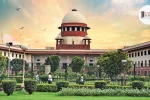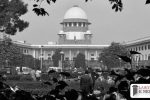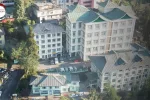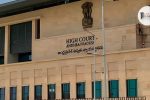Failed to explain circumstances U/S 313 CrPC – Adverse Inference Can Be Drawn -Supreme court
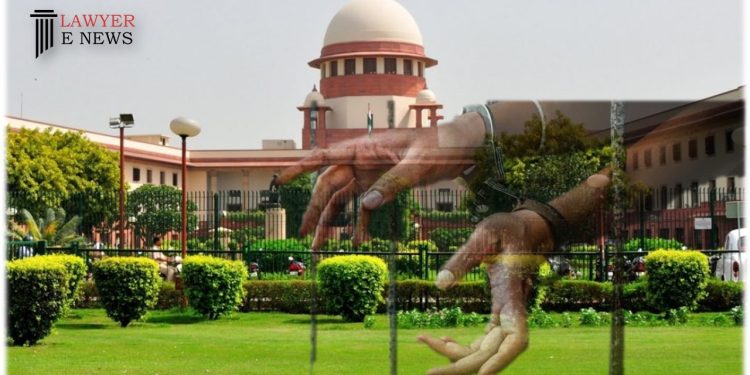
Supreme Court held in the recent judgement (VAHITHA Vs. STATE OF TAMIL NADU D.D 22 Feb 2023) the obligation to put material evidence to the accused under Section 313 CrPC is upon the court, and if the accused does not avail this opportunity, consequences in law must follow. If the accused takes the benefit of this opportunity, then his statement made under Section 313 CrPC, insofar as it supports the case of the prosecution, can be used against him for rendering conviction.
Facts
First Information Report was registered on the information furnished by PW-1 Basheera, mother-in-law of the appellant, about killing of the victim child by her own mother, that is, the appellant. The FIR mentions the events leading up to the murder and the circumstances under which it occurred. After registration of the FIR, the first Investigating Officer reached the place of occurrence, and various reports and photographs were prepared. According to the post-mortem report, the victim died due to asphyxia because of strangulation.
The appellant was arrested approximately nine hours after the occurrence, and the appellant identified the saree by which the child was strangulated, and that the saree carrying blood-stains was seized in the presence of attesting witnesses. Following her arrest, the appellant made a confessional statement and the charge-sheet for the offence under Section 302 IPC against the appellant.
In trial, fourteen witnesses were examined by the prosecution. The key witness, PW-1 Basheera, mother-in-law of the appellant and informant, was examined first. Four witnesses (PW-2 to PW-5) were claimed to have reached the scene immediately after the crime. PW-8 and PW-13 testified to the post-mortem report and report on the victim’s thyroid cartilage bone. PW-9 and PW-7 were examined as attesting witnesses for the investigation process. Apart from witnesses supporting the prosecution, PW-6 Jamal Mohammed, father of the appellant, supported the appellant’s plea of alibi.
Trial court held that the prosecution had proven beyond reasonable doubt that the appellant had committed the offence of murder of the victim child and concluded that the appellant was guilty of the offence under Section 302 IPC and sentenced accordingly.
The appellant challenged the decision of the Trial Court before the Madras High Court, which was dismissed by the impugned judgment and order dated 09.03.2010.
Argument
Appellant focusing on the contradictions in the complaint and the deposition of PW-1 Basheera and the omissions in the witnesses’ statements regarding the method of killing. The appellant argued that the plea of alibi taken by the appellant is established on record. The appellant’s strained relations with her mother-in-law and other relatives of her husband make the possibility of being falsely implicated plausible. Also submitted that the motive suggested by the prosecution remains baseless and the case does not fall under Section 302 IPC.
State opposed the appeal that the prosecution has successfully proven the appellant’s guilt beyond reasonable doubt. The counsel cites various court decisions to support their argument that minor discrepancies in witness statements do not affect the prosecution’s case, and the presence of the appellant with the child has been corroborated by independent witnesses. They also argue that the appellant’s failure to provide an explanation under Section 106 of the Evidence Act about the child’s death, coupled with corroborative evidence, establishes a chain of circumstances leading to the conclusion of guilt. Finally, the counsel submits that when a duly established chain of circumstances leads to no other plausible hypothesis than the guilt of the accused, there is no case for interference in the concurrent findings of the Trial Court and the High Court.
Observed and Held
While discussing the scope of appeal under Art.136, Supreme court reiterates that in an appeal by special leave, where the lower court and high court have made concurrent findings of fact based on evidence presented, every finding of fact cannot be challenged. This is because the scope of such an appeal is not to re-appreciate evidence, but to look for errors of law or procedure, misreading of evidence, or a disregard for judicial process that has led to serious prejudice or injustice. This is only done in rare and exceptional cases where there is manifest illegality or grave miscarriage of justice. The court will not interfere with concurrent findings of fact based on pure appreciation of evidence.
When case based on Circumstantial evidence Supreme Court cited the principles established in the Sharad Birdhichand Sarda case as a guide for proving a case based on circumstantial evidence. The court laid out five principles for a case to be fully established, including the need for the circumstances from which guilt is drawn to be fully established and to exclude every hypothesis except the one to be proved. The court noted that a case can only be proved with certain and explicit evidence, and minor contradictions and inconsistencies should not be a ground for rejecting the prosecution evidence. Serious contradictions and omissions that materially affect the case of the prosecution must be understood in clear contradistinction to mere marginal variations.
The Court emphasized that minor discrepancies in evidence cannot be given excessive importance and explained that witnesses cannot be expected to possess photographic memory, are likely to be overtaken by events, and may have different powers of observation. The Court also noted that witnesses cannot always recall conversations or sequence of events accurately and may be overawed by the court atmosphere or piercing cross-examination, leading to confusion or filling in details from imagination.
Supreme Court stated that the evidence of closely related witnesses should be carefully scrutinized and appreciated before any conclusion is made to rest upon it. The evidence cannot be disbelieved merely on the ground that the witnesses are related to each other or to the deceased. If the evidence is cogent, credible, trustworthy, and has a ring of truth to it, it can and should be relied upon.
Failed to explain circumstances appearing against
Supreme Court recognized the right of the accused to maintain silence during investigation and examination under Section 313 CrPC but also highlighted the consequences of maintaining silence and not availing opportunity to explain the circumstances appearing against him. The obligation to put material evidence to the accused under Section 313 CrPC is upon the court, and if the accused does not avail this opportunity, consequences in law must follow. If the accused takes the benefit of this opportunity, then his statement made under Section 313 CrPC, insofar as it supports the case of the prosecution, can be used against him for rendering conviction.
Supreme Court while discussed the principles of Section 106 of the Evidence Act and the consequences stated that if an accused offers no explanation or furnishes a wrong explanation, absconds, motive is established, and there is corroborative evidence available, then the Court can base conviction on the same. However, if there is doubt or a break in the link of chain of circumstances, the benefit of doubt must go to the accused.
Supreme Court further stated that Section 106 of the Evidence Act does not relieve the prosecution of its primary duty to prove the guilt of the accused.
Supreme Court while go through the evidence held that the prosecution case should not be disregarded just because PW-1 did not present a consistent case. Official and private witnesses have also established relevant facts, and discrepancies in the case are minor contradictions, inconsistencies, or trivial embellishments.
Supreme Court held that the appellant did not provide any explanation or statement except denying the circumstances put to her U/S 313 Cr.P.C . The prosecution evidence established that the victim child was last seen alive with the appellant, and therefore, the appellant was required to explain the circumstances leading to the child’s death. Since the appellant failed to provide any explanation or statement, the burden of Section 106 of the Evidence Act operates heavily against her.
Appeal Dismissed and Conviction upheld.
VAHITHA Vs. STATE OF TAMIL NADU


